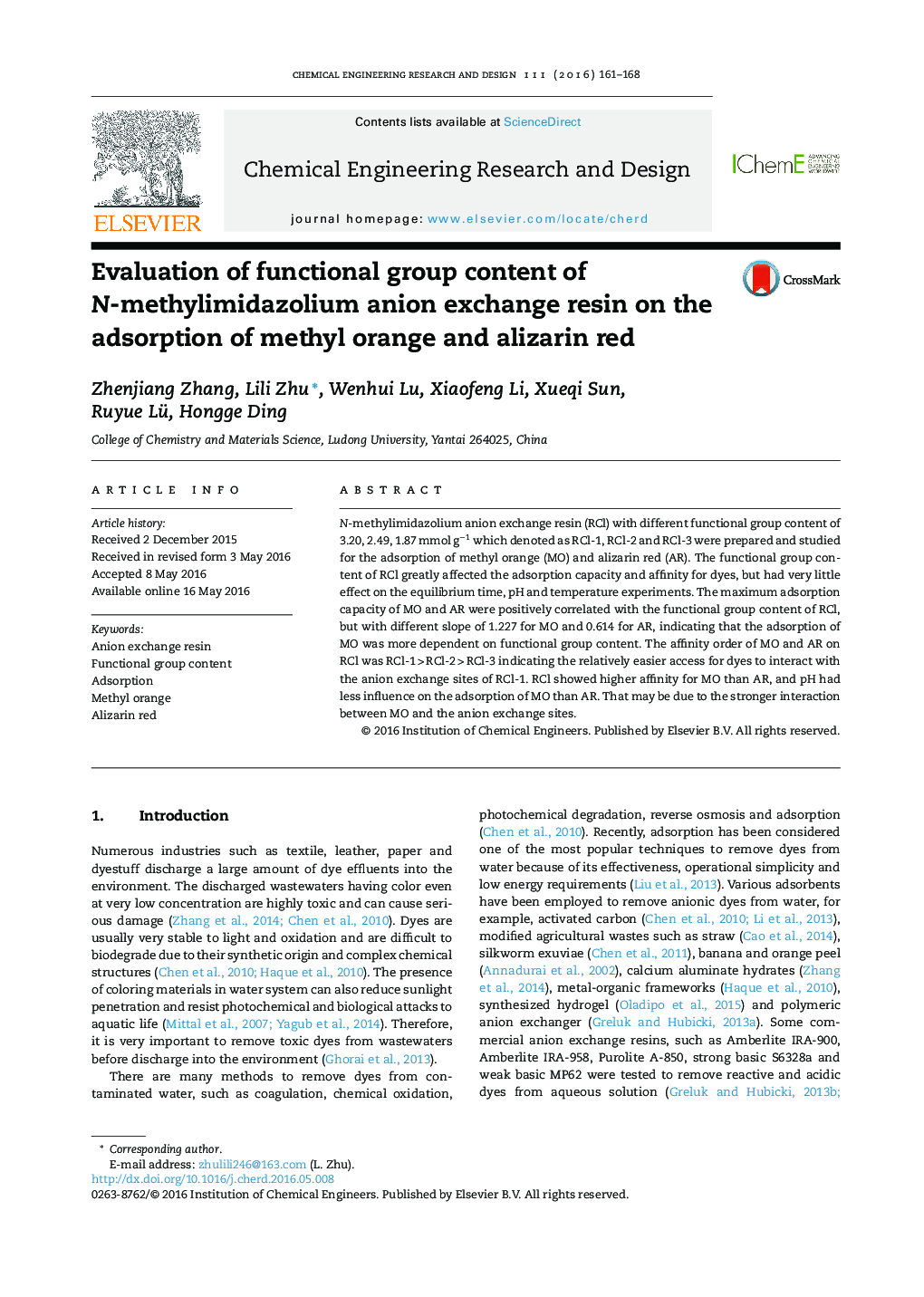| Article ID | Journal | Published Year | Pages | File Type |
|---|---|---|---|---|
| 7006496 | Chemical Engineering Research and Design | 2016 | 8 Pages |
Abstract
N-methylimidazolium anion exchange resin (RCl) with different functional group content of 3.20, 2.49, 1.87 mmol gâ1 which denoted as RCl-1, RCl-2 and RCl-3 were prepared and studied for the adsorption of methyl orange (MO) and alizarin red (AR). The functional group content of RCl greatly affected the adsorption capacity and affinity for dyes, but had very little effect on the equilibrium time, pH and temperature experiments. The maximum adsorption capacity of MO and AR were positively correlated with the functional group content of RCl, but with different slope of 1.227 for MO and 0.614 for AR, indicating that the adsorption of MO was more dependent on functional group content. The affinity order of MO and AR on RCl was RCl-1 > RCl-2 > RCl-3 indicating the relatively easier access for dyes to interact with the anion exchange sites of RCl-1. RCl showed higher affinity for MO than AR, and pH had less influence on the adsorption of MO than AR. That may be due to the stronger interaction between MO and the anion exchange sites.
Related Topics
Physical Sciences and Engineering
Chemical Engineering
Filtration and Separation
Authors
Zhenjiang Zhang, Lili Zhu, Wenhui Lu, Xiaofeng Li, Xueqi Sun, Ruyue Lü, Hongge Ding,
